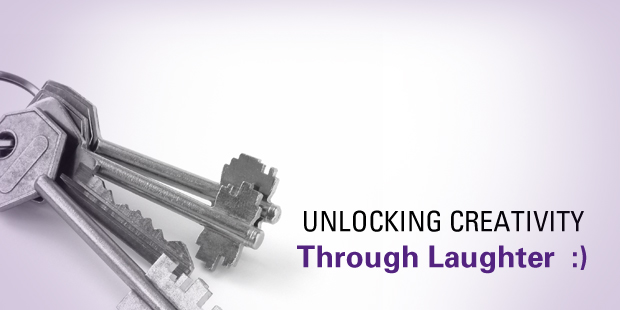
Unlocking Creativity Through Laughter
One of the consistent challenges of creating compelling environments is finding new, fresh ways to engage the hearts of people. In my years as a worship leader, I facilitated many brainstorming sessions with different teams to come up with service elements that would communicate clearly and engage people deeply.
Collaborative brainstorming can be tough work. There are all sorts of things to be considered, like who gets invited, who facilitates, and what is the goal. But the simple truth is that with the right people in the room, even if it’s only 2 or 3 people, brainstorming can yield some amazing results.
While there are many ways to get to ideas in a collaborative setting, one of my favorites is laughter. When a room gets laughing, great ideas seem to follow. Why is that? I have a few theories.
1. Laughter reduces stress.
Do a quick search for “laughter is the best medicine” and you’ll find all sorts of articles detailing the multiple positive physical effects of laughing. Endorphins (the body’s natural feel-good chemicals) get released. A good laugh releases muscle tension and stress. Laughter (through the release of endorphins) can even temporarily relieve pain. All of these things promote a relaxed body and mind, allowing ideas to flow more freely.
2. Real laughter requires vulnerability.
I’m not talking about nervous laughter here. That’s not going to help any brainstorming session. I’m talking about from-your-gut-can’t-stop-falling-off-your-chair-crying-a-little-bit laughter. That kind of laughter only happens when you let your guard down. Guarded collaboration will lead to shallow ideas. You’ve got to be willing to put yourself out there and there’s something about laughter that enhances teamwork and bonds people together.
3. Thinking free leads to laughter.
In The Contrarian’s Guide to Leadership, author Steven Sample describes the concept of “thinking free.” The brain develops normal pathways over time, which leads to what most of us refer to as “thinking inside the box.” The truth is that this is helpful in many ways—it allows us to quickly and easily execute tasks that we have to do on a repeated basis throughout the day. But these synaptic pathways, or brain ruts as I call them, are the enemy of creativity. We have to get free of those pathways in a creative session. Steven Sample suggests that we start by considering completely ridiculous ideas to break free and create new pathways.
For example, if you’re brainstorming an opening for a service about God’s love and care, imagine an opening number with talking sparrows singing a song titled, “He Even Cares for Us.” But in order to really break out of brain ruts, you have to play out an idea as far as you can…usually until you’re laughing. (What if the sparrows each had a different colored leaf and the choreography ended with them flying together and forming the giant image of a heart over the congregation’s heads? AND…the moment wouldn’t be complete unless one sparrow dramatically grasped its throat, swerved erratically around the auditorium and then fell to the ground as if dead. The music would stop, the sparrows would let out a collective gasp, and the lead sparrow would simply and quietly say, “God saw that.” Then, segue into a tender version of “His Eye is on the Sparrow” as the sparrows gently lift their fallen comrade and slowly carry him off stage in a sort of funeral procession. That’s thinking free.)
Maybe I got a little carried away (so did the sparrow, though). The point is that laughter is just plain fun. Collaborative creativity is best done by a group of people that are willing to share dumb ideas to get to good ones, to have fun together. Making laughter and even a bit of silliness acceptable in your brainstorming sessions is imperative from my point of view.
Here are a few practical tips about integrating laughter into your creative sessions.
- Talk about laughter at the beginning of your session. Maybe you could read an article together about how laughter can unlock creativity (where would find an article like that?). Normalize it. Make it OK to laugh.
- Share ridiculous ideas about singing sparrows with choreography (or something even better) to free your mind from brain ruts and get everyone laughing. Keep pushing the ideas until everyone is laughing and someone is crying (from all the laughing).
- After you’ve had a good laugh, gently shift the conversation by saying something like, “That was great. We’ll certainly keep those ideas in the vault (because they’re never coming out!). How else could we convey this idea?”
Laughter certainly is great medicine. And if you’re afflicted with brain ruts and anemic ideas, it just might be the cure for your collaborative creative sessions and lead to compelling service elements.

Tags: Creativity, Steve Finkill, Worship











